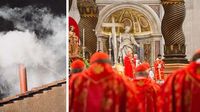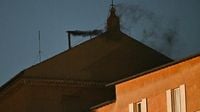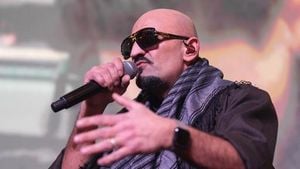In the Vatican, the conclave has officially begun, with a total of 133 eligible cardinals taking up their quarters for the election of a new Pope. This significant event follows the death of Pope Francis, who passed away on Easter Monday, marking a period known as Sedisvakanz, during which the Catholic Church operates without a sitting head. The first papal election took place on the evening of May 7, 2025, and the anticipation surrounding the outcome has captivated millions worldwide.
As tradition dictates, the election process involves the burning of ballots after each vote, with smoke rising from the chimney of the Sistine Chapel signaling the result. According to Tagesschau, black smoke was seen rising on the evening of May 7, indicating that no candidate had achieved the required two-thirds majority of votes needed for election. For the 133 cardinals, this means that at least 89 votes are necessary to elect a new Pope.
Following the first unsuccessful ballot, the cardinals returned to the Vatican guesthouse, Santa Marta, for a short prayer before preparing for the next round of voting. The second ballot is scheduled for the morning of May 8, 2025, with up to four ballots planned for that day—two in the morning and two in the afternoon—unless a candidate secures the necessary majority.
The smoke signals from the Sistine Chapel are closely monitored by thousands gathered in St. Peter's Square, eagerly awaiting news of the new Pope. Historically, the color of the smoke has been a vital indicator of the voting outcome. White smoke signifies a successful election, while black smoke indicates that the cardinals have not yet reached a consensus.
Interestingly, the method of producing the smoke has evolved. Since 2005, the Vatican has employed two separate ovens in the Sistine Chapel: one for burning the ballots and another for creating the smoke signals. The colors are achieved through chemical reactions, with specific substances added to produce the desired effect. For black smoke, potassium perchlorate, anthracene, and sulfur are used, while white smoke is created using potassium chlorate, lactose, and rosin.
As the cardinals prepare for the second ballot, speculation about potential candidates continues to swirl. Some cardinals are advocating for a successor who will carry on Pope Francis's vision of a more transparent and open Church, while others are pushing for a return to traditional roots, emphasizing doctrinal faithfulness. The outcome of this conclave remains uncertain, with many hoping for a decision by the end of the week.
According to Britannica, once a candidate receives the required majority and accepts the election, the highest-ranking cardinal announces 'Habemus Papam' from the balcony of St. Peter's Basilica, marking the official election of the new Pope. This moment is significant not only for the Church but also for the 1.4 billion Catholics around the globe who await their new leader.
In the lead-up to the conclave, the Sistine Chapel was closed to visitors, and the cardinals were sworn to secrecy, ensuring that the proceedings remain confidential. The atmosphere in St. Peter's Square is one of anticipation and hope, as the faithful gather to witness this historic event unfold.
As the cardinals cast their votes, the world watches closely. The next smoke signal could rise as early as 10:30 AM or 12 PM on May 8, 2025, if the first ballot is successful. If not, black smoke is expected to appear between 12 PM and 12:30 PM, and again between 7 PM and 7:30 PM, indicating that the search for a new Pope continues.
The conclave's proceedings are steeped in tradition, with each aspect carefully orchestrated to maintain the sanctity of the election process. The cardinals' commitment to their roles is evident as they engage in prayer and discussions in the privacy of their guesthouse, free from external distractions.
As the days progress, the anticipation builds. The choice of the new Pope will not only influence the direction of the Catholic Church but also resonate with millions of believers worldwide. The decision-making process is complex, and the cardinals are acutely aware of the weight of their responsibilities.
Ultimately, the conclave represents a pivotal moment in the history of the Catholic Church. The outcome will reflect not only the preferences of the cardinals but also the evolving nature of the Church itself, as it navigates the challenges of modernity while remaining anchored in its rich traditions.
With the world watching, the cardinals continue their deliberations, hoping to reach a consensus that will usher in a new era for the Catholic Church. The next few days will be critical as they seek to elect a leader who can guide them through the complexities of contemporary faith and society.





